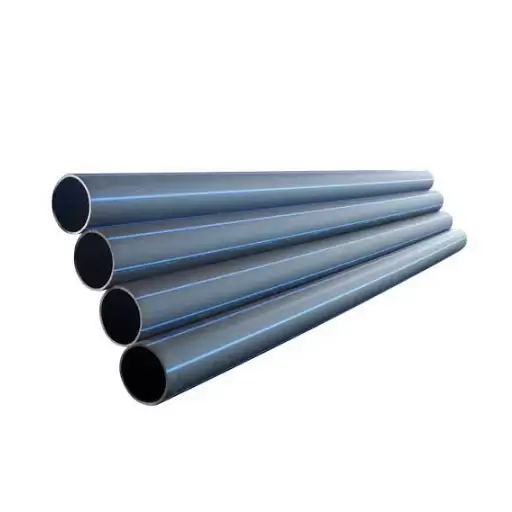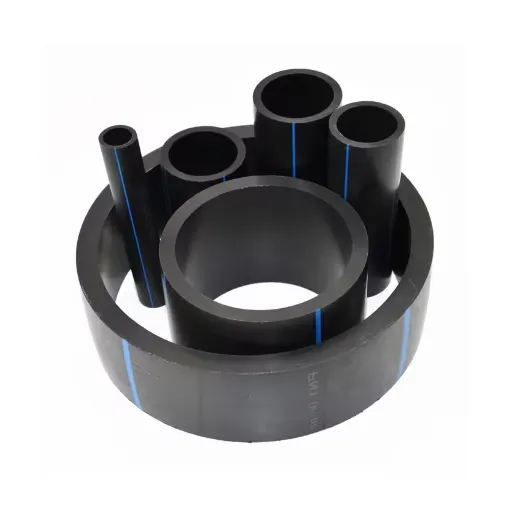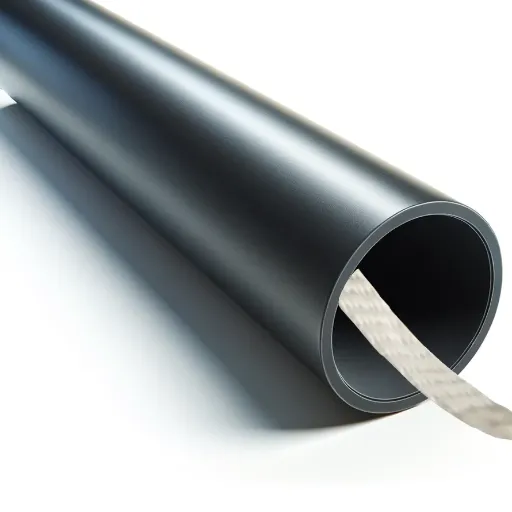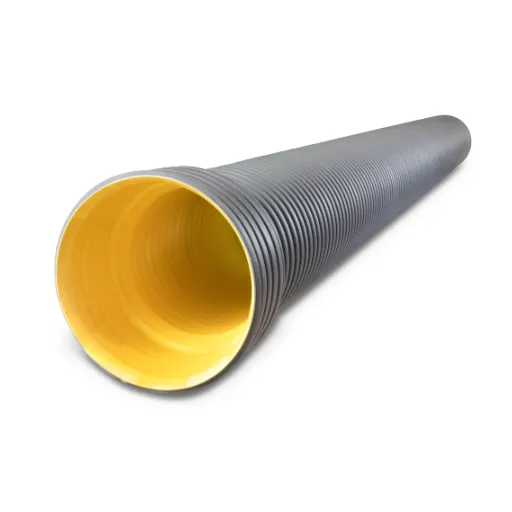High-Density Polyethylene (HDPE) pipes have revolutionized the infrastructure, agriculture, and industrial sectors with their unmatched durability, flexibility, and adaptability. Known for their superior performance in demanding environments, these pipes offer a reliable solution for a wide range of applications. From ensuring efficient water distribution systems to supporting robust industrial piping networks, HDPE pipes have become the backbone of modern engineering projects. This article will explore the unique properties and advantages of HDPE pipes while shedding light on their most common and innovative uses. By the end, you’ll understand why HDPE has emerged as a top choice in both large-scale and small-scale piping solutions.
What Are the Applications of HDPE Pipes?
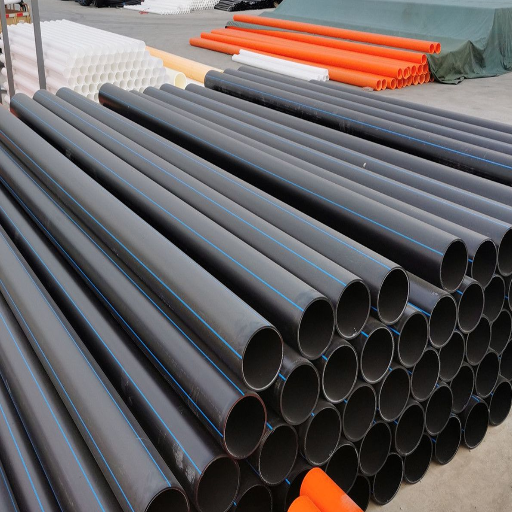
Exploring Drainage Solutions
Because of their great strength, resistance to harsh chemicals, and flexibility, HDPE pipes are used in many types of drainage installations. They are routinely used in construction stormwater drainage systems because their strength and durability provide reliability for extreme environmental conditions over time. Moreover, as non-corrosive materials, HDPE pipes can endure acidic and alkaline runoff without degrading, which is vital for maintaining system integrity.
Another common field of use is wastewater management. HDPE pipes pose a leakproof transportation solution for sewage and industrial wastewater due to their capacity to prevent seepage into surrounding soils, thus protecting groundwater quality. Moreover, the smooth interior surface of these pipes minimizes blockages and ensures that the flow is efficient, which reduces maintenance concerns not only for municipal systems but also for industrial systems.
Compared to other types of pipes, HDPE pipes are one of the most reliable materials recommended in various industries as it pertains to durable drainage installations. They’re becoming more common in agricultural drainage systems and are useful in dealing with irrigation runoff and excess field water, which is fundamental in ensuring soil and crop health. Because of their low weight, simple installation, and strength, these pipes provide affordable drainage solutions for farmers and agricultural engineers.
Understanding Irrigation Systems
The design of irrigation systems addresses the management of water for agriculture as well as landscaping and other activities, and their purpose is the application of sufficient water to cultivated stretches to alleviate the effects of natural rain shortage. In any soil, these systems help to keep crops growing continuously, moderate the water stress, and increase the yield realizable under diverse climatic and soil conditions. The irrigation system design takes into consideration and integrates soil type and crop needs along with the topography of the land to ensure water delivery is accurate and balanced in a sustainable manner.
Surface irrigation, Mechanized Sprinkler Systems, and Drip Irrigation are some of the key types under consideration for irrigation systems. Surface irrigation makes use of gravity to flow water to various parts of the land, therefore using it on flat deserts and gently sloping areas. Equally, crops with undulating topography require systems that yield the ability to spray crops whilst copying natural showering with the controlled loss of water due to runoff, thus the need for Sprinkler Mechanized Irrigation Sprinklers. Using these spouting fools helps avoid wasting water by spraying soil exposed to sunlight, soil erosion, and even water-deprived regions. With the invention of these gadgets, farmers can alter water sprinklers according to the weather for maximum effectiveness using devices such as automated controllers and soil moisture meters.
In my opinion, irrigation systems are one of the most important advancements in modern farming and resource conservation technologies. I would answer briefly by stating that irrigation systems with their supply systems and boundaries, controlled and monitored, inclusive of automation, guarantee yield and health of the crops and sustainability of the agricultural system. Considering the ease of hydraulic automation, the variable systems have to be designed and adapted to each environment, about the crops cultivated. For a system to function optimally, an outstanding challenge is presented by climate change variability.
Utilizing HDPE Pipe in Gas Distribution
Gas distribution systems utilize High-Density Polyethylene (HDPE) pipes extensively since they are flexible, strong, and resistant to corrosion. These pipes provide a reliable and economical framework for transporting natural gas and other fuels while maintaining operational safety and efficiency. The ability of HDPE pipes to retain (withstand high and low temperatures supports their use in varying environmental conditions, while chemically resilient degradation augments their longevity for underground installations.
The fusion welding process for HDPE pipes enables the creation of a leak-proof seal, which diminishes gas escape and enhances system integrity. This advantage, being able to hermetically seal leaks, allows for stringent safety compliance to be upheld in gas distribution networks. In addition, the low-density polyethylene’s flexibility allows for easier installation in hard-to-reach locations, which reduces time, labor costs, and materials needed to complete complicated installations.
Also, the strong hybrid physical properties of HDPE pipes facilitate their gas-transfer cavities, leading to the utmost gas flow and reduced pressure drop due to low friction, increasing gas transfer efficiency. Because of their resistance to soil UV radiation and chemical action, HDPE pipes are now common in modern gas distribution systems. Therefore, they are important for the construction of fuel distribution systems that are environmentally safe and efficient.
Why Choose HDPE Pipe Over Other Materials?
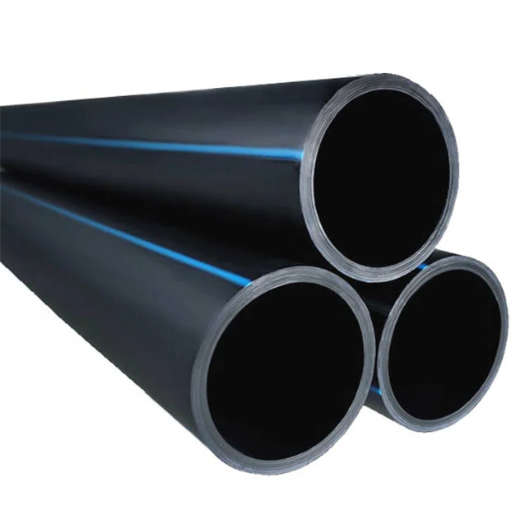
The Advantages of HDPE Pipe in Corrosion Resistance
The use of HDPE pipes or tubing is paramount in industries due to their remarkable corrosion resistance when compared to steel and cast iron. HDPE’s unique chemical structure is responsible for unmatched endurance against different types of environments the The following are five key reasons for HDPE pipes with respect to corrosion resistance:
- Immunity to Rust and Oxidation: Unlike other metal pipes that require protective coatings, HDPE pipes do not corrode and oxidize from moisture or oxygen. Hence, employing HDPE pipes guarantees long operational productivity.
- Resistance to Chemical Corrosion: Applications in the industrial realm and underground environments encounter a variety of chemicals including bases, salts, and even acids. Transportation of hazardous chemical waste is made effortless and ideal because of the hard shell attribute offered by HDPE pipes.
- Durability in Saline Environments: Marine or corrosive coastal regions are usually referred to as “the death zone,” as most materials fail to withstand the range of salt. Unlike other materials, HDPE pipes are reliable in maintaining structural integrity and reducing maintenance costs.
- Non-Reactivity with Soil and Groundwater: Another notable feature is that HDPE pipes do not react with chemical soil or groundwater contaminants. This enables the pipes to have an extended life underground, as well as in gas and sewer systems.
- No Internal Corrosion or Scaling: The absence of internal corrosion and scaling is guaranteed by the lack of blue water scaling on the smooth inner surfaces of HDPE pipes, which also ensures that scaling does not occur in the future.
As a whole, the features mentioned above make HDPE pipes ideal for long-term use in applications with constantly high levels of corrosive substances, as HDPE is a thermoplastics resistant to a wide variety of chemicals.
Examining the Durability of HDPE
The exceptional durability of High-Density Polyethylene (HDPE) is attributable to its chemical resistance, flexibility, and impact strength. Due to its non-reactive molecular structure, HDPE is resistant to many chemicals, including acids, bases, and organic solvents, making it useful in chemically hostile environments. Moreover, the outstanding impact resistance of HDPE pipes at low temperatures protects the pipes’ structural integrity during mechanical stress and extreme climatic conditions.
These characteristics, coupled with the material’s high fatigue resistance, enhance its longevity. Unlike conventional materials like metal, HDPE does not suffer damage during repeated cycles of stress, making it advantageous for water supply and irrigation systems that experience fluctuating pressures. Most notably, under standard operating conditions, HDPE pipes have a designed service life of 50-100 years, reducing replacements and costs.
Most noteworthy, HDPE’s flexibility allows it to withstand cracking or breaking when adapting to the movement of the soil and various environmental changes, as well as seismic activities. Such bending and breaking strains are useful in areas susceptible to ground settling or earthquakes. Lastly, stability against UV radiation grants HDPE additional outdoor functionality. Combined with its lightweight nature, which significantly reduces the difficulties associated with installation, HDPE proves superior to other materials.
Such features collectively highlight that HDPE is a material designed to endure stress while maintaining reliability across diverse industrial and ecological settings.
Comparing HDPE Pipe with Metal Pipes
HDPE pipes are cost-efficient, flexible, and light while also resistant to corrosion. Whereas metal pipes have high durability to impact, are more suitable for high-pressure, or large diameter applications.
|
Attribute |
HDPE Pipe |
Metal Pipe |
|---|---|---|
|
Mass |
Lightweight |
Heavy |
|
Rusting |
Resistant |
Susceptible |
|
Bendability |
High |
Low |
|
Lifespan |
Long-lasting |
Durable |
|
Expense |
Affordable |
Expensive |
|
Setup |
Simple |
Complicated |
|
Deposits |
Resistant |
Accumulates |
|
Strength |
High resilience |
Superior impact |
|
Heat |
Insulating |
Conductive |
|
Sustainability |
Recyclable |
High footprint |
How Does the Fitting of HDPE Pipes Work?
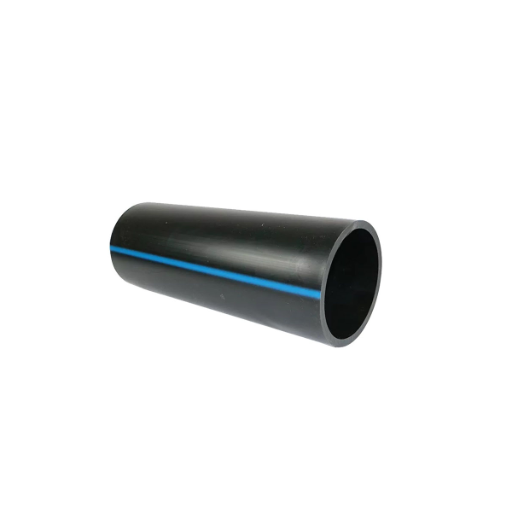
Understanding Electrofusion Techniques
Electrofusion is a distinct technique for joining HDPE pipes by melting and fusing the materials on a molecular level with electrical heat. At the center, a fitting with a built-in resistance wire functions, which is heated electrically to permanently and securely bond the two ends of a pipe.
The washing and scraping of the pipe ends to eliminate any oxidation layers are the first steps of preparing pipe surfaces while ensuring the connection is contaminant-free. Prepped pipes are then placed into the electrofusion fitting at the specified depth, post which an electrofusion control unit (ECU) is attached to the fitting. The fitted resistance wire is subsequently powered by the ECU, and in turn, controlled heating is produced. This leads to the melting and bonding of the fitting’s inner surfaces and the pipe’s outer surface to form a joint. When cooled, it becomes a homogeneous joint.
One of the noteworthy benefits of using electrofusion is functionality in tight areas like trenches or places that are difficult to reach with traditional welding. Furthermore, it offers uniformity over joint quality because a mechanical system will always perform with precision compared to an operator-controlled system, where variables are bound to be present. It should, however, be mentioned that any fusion tests, like pressure testing, system integrity checks, are mandatory for validating the system accuracy.
Automatic ECUs with real time observation features are new developments related to electrofusion technology, along with enhanced accuracy-based barcode systems, and materials that endure extreme operating conditions. These developments improve the trustworthiness and functionality of HDPE piping systems, thus asserting electrofusion as a vital technology for water supply systems and industrial pipelines.
The Role of Fusion in Pipe Installation
Electrofusion represents a form of pipe welding technology for HDPE pipes that is accomplished via electrical heat. Gas and oil pipelines utilize the technique of electrofusion, particularly for its efficiency. Performance, reliability, and durability improvements are encountered regarding piping systems, especially with High-Density Polyethylene (HDPE) pipes. The following elucidates the primary impact of pipe fusion in installation:
- Strong Joint: Electro and butt fusion fosters strong, singular joints that are identically powerful to the pipe. Unlike mechanical fittings, these fusion joints offer circumvention the potential for leaking – giving added strength over the decades.
- Resistance to Environment: Raw fusion has extreme resistance to outside factors such as Harsh temperature, dirt movement and chemicals which renders it usable in heavy industrial or environmental conditions.
- Reduced chance of contamination: The ensured impermeable and absolute seal of fusion joint averts the possibility of contaminant infiltration or exfiltration; this guarantees the integrity of sensitive fluid transmissions and portable water.
- Economical: The lower spending that might come with the added expenses within the first stages of fusion technology are misleading. Less maintenance, using the technology, prolong operational life, which culminates in greatly enhanced cost efficiency in the long-run.
- Ease of Installation for Complex Networks: Fusion can make the construction of more intricate piping systems easier and more flexible because it allows exact positioning within tight spaces or difficult landforms without damaging the joint.
All of these characteristics show how fusion technology helps build dependable, effective, and sustainable piping systems for many different functions.
Benefits of Polyethylene Piping Materials
In modern infrastructure systems, polyethylene piping materials have gained repute for their versatility and performance.
- Corrosion Resistance: Unlike metal pipes, polyethylene does not corrode from chemical, moisture, or soil attacks. This results in reliable performance and longer lifespans where materials used by competitors often fail.
- Flexibility and Toughness: Such slackness makes polyethylene pipes exceptionally flexible, which makes them ideal for applications involving bending like trenchless installations. This slackness mitigates damage from ground shifts or freeze-thaw cycles. Laboratory testing shows that polyethylene pipes have exceptional impact resistance at -40°F (-40°C) and even below.
- Lightweight and Easy Handling: Compared to steel or concrete, polyethylene pipes are much lighter, which helps ease transportation and installation, and consequently, reduces labor time and cost. Research suggests that, depending on the size and scope of the project, these pipes can cut installation costs by as much as 30%.
- Leak-Proof Jointing Systems: Leakages have been minimal for a long time, and maintenance of the repairs done, and water loss has also been less due to the use of pipes made up of polyethylene. The industry does say, though, that Pipe made from Polyethylene have low maintenance cost owing to water leakage close to 75 percent as compared to other conventional pipes.
- Eco-Friendly: Recycling Polyethylene comes easily as its life-cycle carbon footprint is lower than many pipes. Furthermore, its production is less energy consuming therefore makes it Eco-friendly. Lifecycle assessments proved a low CO2 emissions claim during the use of Polyethylene pipes, PVC and Steel pipes claimed reducing CO2 emissions up to 50 percent.
All in all explains the low maintenance, reliable, and efficient pipes used in modern engineering are made of Polyethylene.
What Are the Advantages and Disadvantages of HDPE Pipes?
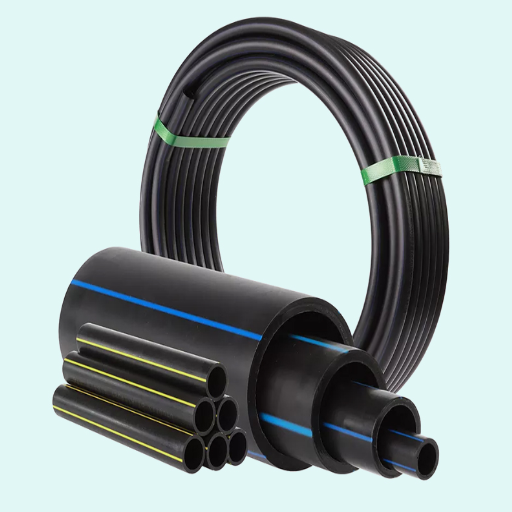
Assessing Cost-Effectiveness and Long Service
In my opinion, HDPE pipes are highly beneficial considering a variety of factors, as they offer a favorable combination of cost, effectiveness, and durability for numerous applications. One of the most notable attributes that make these pipes economical is their lightweight weight which significantly lowers both transportation and installation costs. Furthermore, their flexibility reduces the need for fittings, which helps further reduce project costs. Additionally, HDPE pipes offer lower maintenance and repair costs compared to traditional materials like steel or concrete due to their resistance to corrosion and chemical degradation. This is yet another factor of consideration in terms of cost efficiency.
Moreover, these pipes have low service life expenses, which is another important factor. These pipes are designed to endure severe conditions such as high-pressure systems and aggressive chemical environments. Under normal operating conditions, these pipes have a life expectancy of over 50 years. Cheaper circumstantial replacements help HDPE pipes exceed steel in terms of longevity. Flexible tolerances to ground movement as well as temperature fluctuations add to their resilience and reliable performance in a range of environments.
Nevertheless, it remains essential to consider the possible cons as well. Although HDPE pipes have many advantages, their material cost may be greater than other options. Moreover, proper care and installation procedures must be followed to prevent harm, such as scratching or gouging, which may impair structural strength. Even while considering these other factors, the versatility and strength of HDPE pipes are a value, especially for projects focused on sustainable construction and long-term performance goals.
Challenges in Using HDPE Pipe Systems
One of the most challenging issues to be addressed with an HDPE pipe system is achieving proper fusion and joint integrity during its installation. The joining of HDPE pipes, either through butt fusion or electrofusion, requires very high temperatures, clean surfaces, and skilled labor to prevent weak points and leaks. Compromised connections, the result of weak fusion standards during the welding process, often negatively impact the system’s reliability because bonds are broken during stress testing.
A higher thermal expansion coefficient when compared to metal makes contraction and expansion due to heat another paramount concern. This, along with the need for stress mitigation on the pipeline, calls for precision in the placement of expansion joints. Crippled design considerations arising out of the inability to mitigate gaps in the intended pipe routing is added stress unnecessary maneuvering to avoid the expansion joints.
Deformation under severe loading and high pressure, lack of proper supporting bedding or backfill materials as well as inadequate soil under the pipe increases susceptibility of the HDPE pipes. Increased adherence to trench geometry specifications, soil compaction demands, and bounding guidelines for buried applications tends to make these pipes less prone to deformation.
Chemical compatibility is equally important when it comes to the use of HDPE. The material is resistant to a variety of chemicals, but some organic solvents and elevated temperature conditions may shorten its lifespan. Designers need to assess compatibility with transported media if the pipe’s functional efficiency and longevity are to be maximized.
Other external environmental effects, such as unprotected exposure to prolonged ultraviolet (UV) light, UV stabilizers included in the polymer make-up do help, but they may give rise to surface skin breakdown over time. In containment-type applications, the need for additional protective measures such as burial installations or UV-resistant coatings may increase the complexity of the overall project while driving up expenditures.
The above issues highlight the poorly developed design and extreme disregard for the material’s geometry that needs to be balanced with engineering practices, while integrating HDPE pipe systems into multiple-use architectures.
What Are the Common Uses of HDPE Pipe in Water Supply?
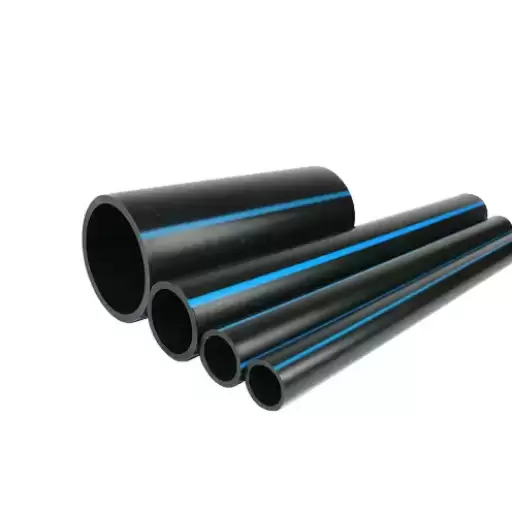
Applications in Water Distribution
The superior characteristics of HDPE pipes make them critical in water distribution systems today. Their high resistance to corrosion as well as chemical reactions guarantees reliability for the long haul, even in harsh environments riddled with aggressive substances or variable pH levels. Moreover, HDPE pipes can be bent to a remarkable degree increasing their flexibility, which allows for easier installations in rocky terrains and regions with seismic activity.
Water distribution using HDPE pipes includes both municipal and industrial applications. Their use in municipal water supply networks greatly benefits from the leakage-resistant joints, as are most modern piping materials. Industry data suggests that HDPE systems can amplify water retention, reducing leakage by up to 30% as compared to older metal and concrete systems, which aligns with global conservation efforts.
On the industrial side, these systems are most useful in agricultural irrigation as well as in the supply systems of manufacturing facilities due to HDPE’s ability to endure high-pressure water flows and resistance to scale and biological contaminants. In addition, the lightweight nature of these pipes facilitates transport, which further enables rapid installation and reduced labor costs. The combination of these advantages implements HDPE systems as a strategically sound choice for creating reliable and sustainable water infrastructures.
Benefits for Water Mains and Supply Lines
The unparalleled combination of durability, flexibility, and cost-effectiveness in High-Density Polyethylene (HDPE) pipes makes them extremely reliable in water mains and supply line infrastructure, and allows them to perform extraordinarily well. HDPE pipes possess the ability to endure immense pressure and varying temperatures, which makes them particularly useful for long-lasting water distribution systems. Their corrosion resistance is critical in ensuring longevity, as they do not degrade when exposed to rust, chemicals, or pH changes, which are frequently encountered in municipal water supplies.
Cost-efficient value resources, as well as operational cost reductions due to resource water loss, are advantages provided by thermal welding. HDPE pipes perform exceptionally well when subjected to environmental stress cracks as well as in the locus of severe geological activities. Researchers suggest that under the right conditions, these pipes can indeed last for more than 50 years, further discussing aspects of these pipes in terms of durability in infrastructural and constructal frameworks.
Moreover, their ease of transportation and installation without loss of structural reliability due to their lightweight design is paramount. Furthermore, these savings are also made on the life cycle of the pipes due to smooth inner surfaces, which provide unhindered block flow. These and many other advantages render HDPE piping vital in modern engineering schemes for water supply systems.
Role in Water Applications and Drainage Pipes
The application of high-density polyethylene (HDPE) pipes in water distribution and drainage systems has increased dramatically owing to their material properties and favorable strength-to-weight ratio. Its chemical resistance enables their use in potable water distribution HDPE pipes, as there is no leaching of chemicals into the water. This is a major consideration in meeting strict health and safety regulations. In addition, the superior absorption of kinetic energy allows the use of these pipes in profoundly impulsive and stressed environments prone to ground movement, or HHDPE- high-density polyethylene is an acronym that refers to a type of thermoplastic. Changes in external pressure.
With regards to drainage, HDPE pipes offer the best hydraulic property as water can flow unimpeded, owing to the smooth internal finish, which minimizes frictional losses. These characteristics, coupled with zero deposition of sediments over time, enhance flow rates and minimize maintenance needs even in vast sewer system networks. Other DDPE – double density polyethylene pipe, electro-fusion, and butt welding jointing advancements offer improved system reliability through maintenance free leak-tight HDPE pipe systems under high pressure water and wastewater scenarios. Additional cost savings from reduced installation expenses due to the low weight of HDPE pipes and decreased need for heavy equipment translate to more timely project completions with minimized on-site incident risks.
Considering its lifespan of up to 100 years under typical conditions, the lifecycle costs of High-Density Polyethylene (HDPE) are an important consideration for engineers and project designers. This material’s longevity in service, along with its capacity to be recycled, contributes to sustainability and decreases ecological harm. As a result, HDPE piping is extensively used in municipalities, industries, and agriculture where its efficiency and reliability are required.
References
Frequently Asked Questions (FAQ)
Q: What are the significant advantages of using HDPE pipe over traditional piping materials?
A: HDPE pipe offers several significant advantages over traditional piping materials like concrete or steel, including its lightweight nature, flexibility, and resistance to chemicals. It is also highly durable, corrosion-resistant, and can be used in various applications, making it a superior choice for many industries.
Q: How does the pipe size of HDPE affect its applications?
A: The pipe size of HDPE can affect its applications by determining the flow capacity and pressure rating of the system. HDPE pipes are available in a wide range of sizes, allowing them to be used in diverse applications, from small-scale residential projects to large industrial systems.
Q: What are some common HDPE applications in industrial settings?
A: HDPE is commonly used in industrial settings for system supply lines, slurry transfer lines, and gas mains. Its durability and resistance to chemicals make it ideal for these demanding environments.
Q: How do the features of HDPE contribute to its use in agricultural applications?
A: The features of HDPE, such as its flexibility, resistance to chemicals, and durability, make it an excellent choice for agricultural applications. It is often used to transfer fluids and gases in irrigation systems and other agricultural processes.
Q: Why is HDPE considered a type of flexible plastic pipe?
A: HDPE is considered a type of flexible plastic pipe because it can bend without breaking, making it ideal for installations that require bending around obstacles. This flexibility reduces the need for fittings and joints, simplifying the installation process.
Q: How does HDPE compare to PVC pipe in terms of benefits?
A: While both HDPE and PVC pipe are types of plastic pipe, HDPE offers several benefits over PVC, including higher flexibility, better resistance to impact and chemicals, and a longer lifespan. HDPE is also more environmentally friendly, as HDPE is recyclable.
Q: Can HDPE pipes be used in food-related applications?
A: Yes, HDPE pipes can be used in food-related applications as they can be made from food-grade polyethylene virgin material. This ensures that they are safe for transporting potable water and other food-related fluids.
Q: What makes thermoplastic HDPE a preferred choice for pipe and tubing?
A: Thermoplastic HDPE is a preferred choice for pipe and tubing due to its versatility, durability, and ease of installation. Its ability to withstand high pressures and its resistance to chemicals make it suitable for a wide range of industrial and residential applications.
Q: How do you install HDPE pipes, and what are the benefits of HDPE for installation?
A: HDPE pipes can be installed using various methods, including trenchless technology and traditional trenching. The benefits of HDPE for installation include its lightweight nature, which reduces labor costs, and its flexibility, which allows for fewer fittings and a more seamless installation process.



